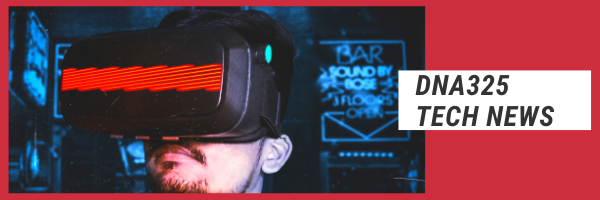Andrei Karol – a Product Manager at California based start-up EduNav that helps the US students graduate in time by creating personal education plans. Since 2017, has been leading a product management course ProductMan for those who want to become a Product Manager. His passions are to create new opportunities and develop products that bring real value to people.
– a Product Manager at California based start-up EduNav that helps the US students graduate in time by creating personal education plans. Since 2017, has been leading a product management course ProductMan for those who want to become a Product Manager. His passions are to create new opportunities and develop products that bring real value to people.
Hi Andrei, Let’s Start!
You started off as a Project Manager, how did you transition to Product Management?
In 2015 I closed down my business and joined a startup called Cardiolyse as a Project Manager. In a year I was promoted to CTO. 40% of my work was related to Product Management activities: I was talking to our first users and customers, getting their feedback, working on UI/UX of our applications, I supported sales and business development activities, and customer success. What was also really helpful for me, I graduated Product School organized by Google. And it was cool because I received so much knowledge about Product Management itself and it was a huge step forward.
Speaking of which, what are other ways of learning Product Management?
Firstly, I’d recommend joining the startup, because you do a lot of different things like Jack-of-all-trades. Not only do you learn the basics, but also you learn by doing, which is essential. Secondly, go to some PM courses and pick the ones which give a lot of homework, so you could try to create something. You should work on your own “pet product”, create something you like, for free, or which potentially grows into a business. Thirdly, you can look for internship positions in big companies. Choose the company you like and ask them for a 3-4 months internship, which is enough to pick up a lot of knowledge and experience.
What do you like about being a Product Manager?
I like solving problems, crafting solid and complex solutions, and working with hypotheses.
And what do you dislike?
Only two things: long and sometimes useless calls and the situations when you have no data to prove the hypothesis.
Besides having lots of calls, what’s the day in the life of a PM like?
There’s a lot of stuff. I start at 10 a.m. and check emails or dashboard with overnight analytics. Next, I do planning: I choose 2-3 main tasks and 3-4 less important. At 11 a.m. I have a scrum call where we sync with leaders of all the development teams, and then I work with the UI/UX developers. During coffee breaks, I read news related to product management. Now more than ever, it’s important to monitor everything, e.g. I thought of the new product I’m working on based on the need I saw in the news and by talking it through with the customers. Then I polish user stories and answers to all the inquiries. When my Ukrainian shift is over, I start my American one. At 7 p.m. I have calls with customers, at 8 p.m. I have calls with the top management. I finish around 10 p.m.
I hope you have time to breathe. It’s true what they say that PM work is 24/7.
More or less. Except we don’t work on the weekends unless it is something supercritical. Otherwise, we’d burn out pretty fast.
Let’s talk about skills a Product Manager should have. Is it necessary for him to know how to code?
It is nice to have. I’ve never seen a PM who could code on a very good level. Definitely, coding isn’t a part of a PM’s skillset unless you want to become a technical Product Manager. Those guys really need to be tech-savvy. If we are talking about hard skills, the PM should understand the software development life cycle, some basics about API calls, architecture, back-end, and front-end.
What is the difference between American and Ukrainian PM style?
In the USA PMs are more focused on customer success, sales, and marketing, whereas in Ukraine – user experience, implementation, and delivery. That is just because US managers are closer to customers because there is no time difference.
What is a Product Mindset?
To put it simply, empathize the needs and pains of users, focus on solutions, and care about the sales. If you focus on all of them, you are able to create a successful product.
Let’s talk more about products now. Which metrics are key to the product?
Basically, for different types of products, there are different metrics. But there are 3 main ones, which are good for all the products:
- CAC (Customer acquisition cost) The cheaper we get the user the better for the business;
- Retention. A bigger percentage of retained customers is better for the company;
- CLV (Customer lifetime value) How to increase this parameter in every release we have.
And there’s also what I like to call “a-ha moment” when the user realizes the value of the product.
How do you organize a product roadmap?
The simpler – the better. I use Excel spreadsheets, and we use Microsoft office at the company. Why? Because everyone knows how to use it, how to contribute, super easy to rearrange it. Then I create JIRA tickets. In order to present some information to customers, we create “fancy” PowerPoint slides:) I’ve tried different tools, but all of them are focused on good visualization of the process.
What prioritization methods do you use? How do you prioritize bug fixes VS new product features?
Once again, the simpler the better. Just keep it simple stupid. The simplest way to prioritize your features is just to check either feature:
- Decrease customer acquisition cost (Everything that would allow us to save on the marketing);
- Everything that increases the lifetime value;
- Be aware of the must-have features from products from big markets if you work in a competitive environment.
As for bugs and features, we rate them all using JIRA methodology. First, we do bug fixes, and then we add new features. It isn’t good when you have a lot of new features with bugs in them.
What are the most memorable fuckups in product development? Besides deadlines:)
The biggest one I had in Cardiolyse was the development of an ECG device. We had software but didn’t have any hardware to get electrical signals from humans. We decided not to buy ready solutions from the market, which were all expensive and low quality. We didn’t want to spend time looking for a good one, so we agreed to develop our own device and it was a really bad idea because we didn’t validate the hypothesis itself: hardware & software would be a good model in our case i.e. we have enough resources to pass medical certification and the product is successful in sales. We spent 7 months and a huge budget on the development and delivery of this electronic device only to realize that this model wouldn’t fly. Since then, I prefer to first sell the product and then develop it. First, you need to be sure you have a solid demand from the market and they are willing to pay, or they even pay you first, and only then you start product development. It is one of the most efficient ways to create a product or you’ll end up having a product which is high quality, but nobody is going to buy it.
Yes, of course, but you learn from those mistakes and they help you to be better.
Sure, but it is expensive, you know. Seven months of the work of the whole team. One more similar fuckup happened at Edunav. We were developing new functionality, which would allow us to speed up the deployment and in the end, we realized the complexity of this functionality is super high for our users. It would be extremely difficult for them to operate this functionality and it is just because we limited usability testing.
If you want to become a Product Manager and be as cool as Andrei, you need to constantly learn and develop a product mindset. Being a PM isn’t only about constant calls with teams and customers, but also the development of rigid and sophisticated solutions. Check out the useful sources recommended by Andrei below:
What to read?
- Rob Fitzpatrick “The Mom Test: How to Talk to Customers and Learn If Your Business is a Good Idea when Everyone is Lying to You”
- Steve Blank “The Four Steps to the Epiphany: Successful Strategies for Products that Win”
- Eric Ries “The Lean Startup: How Today’s Entrepreneurs Use Continuous Innovation to Create Radically Successful Businesses”



